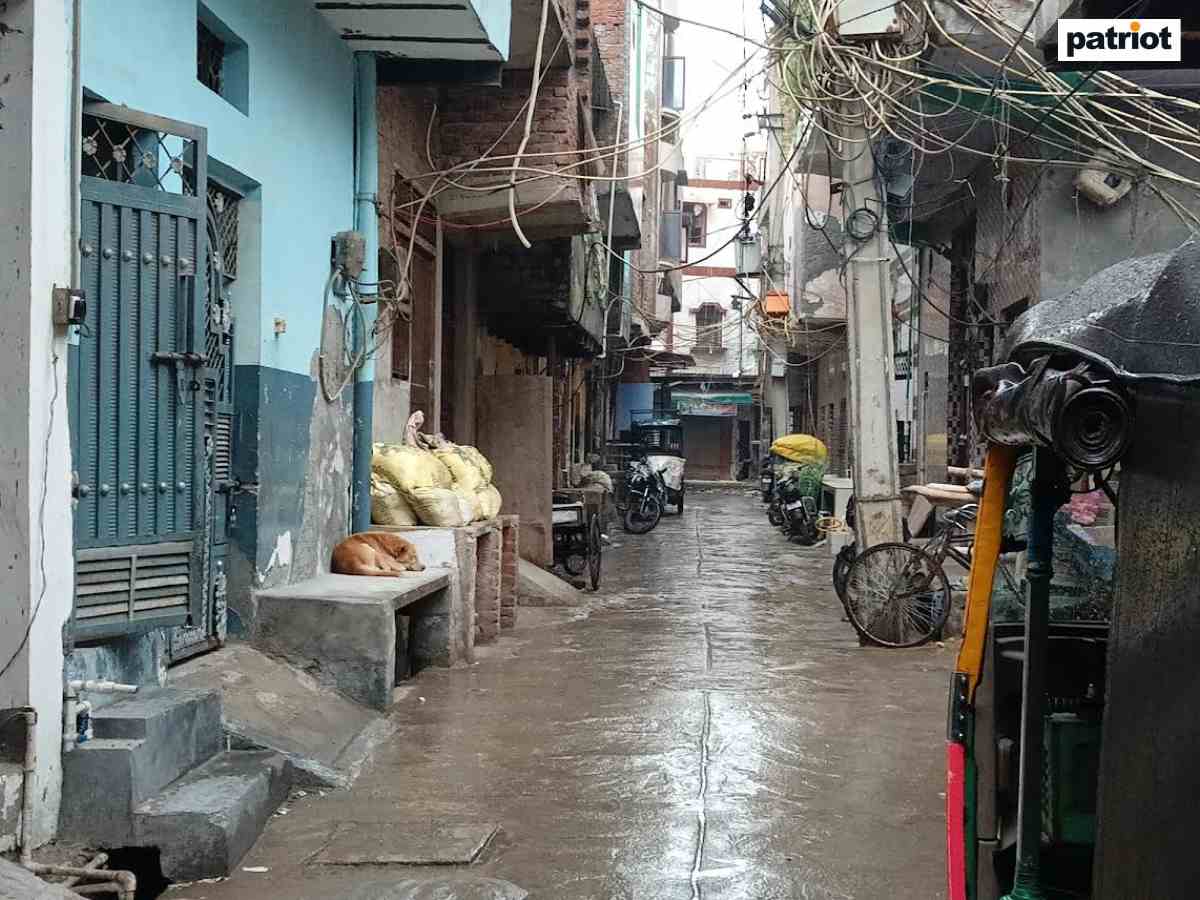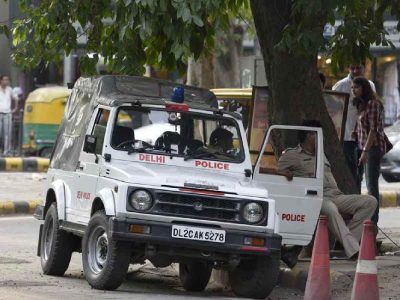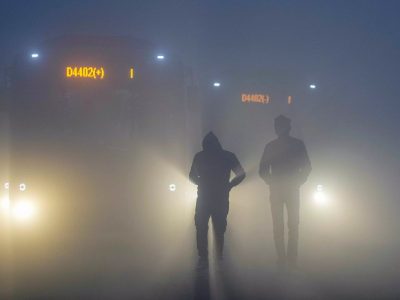Four and a half years after the devastating North East Delhi riots, the anguish of victims has come to be overshadowed by a sluggish compensation process.
Despite the formation of the North East Delhi Riots Claims Commission (NEDRCC) in April 2020, a staggering 2,790 claims remain unresolved. Promised compensation remains a distant hope for many, while bureaucratic delays and administrative failures continue to hinder relief efforts.
The scars of violence, which claimed 53 lives and razed numerous properties, are yet to heal as both residents and institutions struggle to rebuild their shattered lives.
Though the affected families continue to mourn the loss that the ill-fated week brought with it.
The Commission (NEDRCC) was formed by Chief Minister Arvind Kejriwal following the 2020 riots. According to the scheme, the government had announced compensation of Rs 10 lakh for the death of an adult family member, Rs 5 lakh for permanent incapacitation, Rs 2 lakh for serious injuries, and Rs 20,000 for minor injuries.
Concerning the loss of permanent dwellings and commercial units, the scheme stated Rs 5 lakh for major damage to residential units, Rs 2.5 lakh for substantial damage, and Rs 25,000 for minor damage, while promising Rs 50,000 for damage to e-rickshaws and Rs 5,000 for cattle. Additionally, it offered Rs 5 lakh compensation for uninsured commercial units.
Also read: SC directives’ disregard hurts JNU contractual workers
However, to date, most of these claims remain unfulfilled.
On November 20, the NEDRCC published a public notice stating that they were accepting claims for physical injuries and deaths. “In furtherance of the advertisement of November 29, 2020, this Commission shall also accept claims in cases of deaths and physical injuries, which can be submit ted to the office of this Commission personally, or by registered/speed post, or by e-mail at nerdc.com mission@delhi.gov.in within 30 days of this notice (extendable by 15 days under special circumstances),” the notice stated.
Yet, no development is in sight. Although a senior official at the NEDRCC remains hopeful that the claims will be disbursed soon, the wait seems endless. When the Commission was formed, the Lieutenant Governor of the nation al capital had given a deadline of three months from August 24, 2022. Since then, however, there has been an unfortunate delay of over two more years.
The government’s response remains unchanged. “We have been waiting to finalise the reports ourselves. We have already sent the list and amount of the claims made by the affected families, but there seems to be a delay in finalising them. We had already audited them when the claims were made. People keep asking how long it will take to disburse the claimed amounts, but all we can tell them is that it will be disbursed shortly. It does not reflect well on us, nor on the government, if all we are doing is delaying the disbursement,” said a senior official attached to the NEDRCC.
Government lapses
On August 25, 2022, Lieutenant Governor Vinai Kumar Saxena appointed 40 new loss assessors to the commission to expedite the settlement of claims. They were slated to compile reports assessing the extent of financial losses and present them to the Delhi High Court.
L-G Saxena also directed the existing 14 assessors to submit their reports on claim settlements assigned to them within three weeks from the date of August 25. Reportedly, out of the 40 new assessors, some were not even aware of the responsibility given to them by the L-G’s office, while others said they were yet to begin work despite receiving their letter of appointment.
On the other hand, officials at the Commission also highlighted that, out of the 40, they had only been able to contact five of the newly appointed assessors.
The report further mentioned that five of the assessors found their names mentioned twice in the list.
It is this same lackadaisical attitude of the government that has affected multiple residents in North East Delhi’s affected localities, who are still searching for a foundation on which to rebuild. Unfortunately, to rebuild, one needs a solid monetary foundation—something that was taken from them during the weeks of inferno that struck their business es and residences.
Also read: ISBTs: Crumbling infrastructure fails commuters; thorough revamp promises remain unfulfilled
Struggle of Shiv Vihar residents
Residents in Shiv Vihar’s Karawal Nagar were among the worst affected. Hashim Ali, the owner of a garment business who maintained a cordial relationship with everyone in the locality, witnessed his entire business topple over in the blink of an eye. In January 2020, he was living life as usual, managing his factory and overseeing a workforce of a few people. “I had a garments business, and I would ship my clothes all across the national capital’s flea markets. From Janpath to Sarojini Nagar, I used to send my garments every where, and the work was very fulfilling. I used to manage the work force while also finding time to tailor the clothes required for special occasions. Unfortunately, that was then,” he said.
However, the good times were never meant to stay, as the riots shook the ground from beneath him. During the riots, he saw his entire factory razed to the ground, along with finished and raw produce valued at several lakhs. His house was also set on fire and reduced to rubble. “I never want to relive that day. After the fire, the government sent me Rs 50,000 for the loss of my house, but that was audited to have suffered a loss of around Rs 10 lakh. I filled up the form for my commercial property after that, but I have yet to receive a single penny,” Ali said. He had filled out the form in 2022, claiming a minimum sum of Rs 5 lakh.
Presently, Ali works as a tailor in someone else’s shop, earning just enough to get by.
Similarly, Tahir, another resident of Shiv Vihar, felt the brunt of the riots, which not only took away his only source of livelihood but also his home. “I have yet to receive any compensation for my e-rickshaw as Kejriwal had promised. At this point, I have lost all hope, and I’ve learned to let it go, but being a contractual labour now is difficult.
Monetarily, I have no savings for my family’s security. Whatever I earn gets spent on daily expenses,” he said.
Tahir had filed a claim of Rs 3 lakh for his losses.
Mustafabad School and Local Families Await Riot Compensation as Claims Remain Unsettled
It is not just residents but also entire institutions that suffered. Arun Modern Public Senior Secondary School in Mustafabad became a focal point as one of the major institutions that was not only vandalised but also set ablaze during the riots.
Although tensions have since eased, the scars remain, as their claims have not yet been met. This has affected the school’s functioning. “The residents here helped us to get back on our feet by providing donations. The government sent us initial reparations of around Rs 5 lakh, which were used to recon struct the school,” said Abhishek Sharma, the school’s superintendent.
According to him, the assessors reported that the damages amounted to upwards of Rs 1.5 crore, but they would only be receiving Rs 1 crore. Unfortunately, the school is yet to see any money from the commission.
To put matters into perspective, many families across affected localities—such as Seelampur, Jaffrabad, Maujpur, Kardampuri, Babarpur, Gokulpuri, and Shivpur—are still awaiting justice. Unfortunately, neither the state nor central governments appear in any hurry to resolve the issue, while the NEDRCC, chaired by Justice Asha Menon, continues to await its reports to reach the Delhi High Court.
Apart from 53 deaths, vandals also razed 57 shops, 500 vehicles, six warehouses, two schools, four factories, and four religious places, during the riots that took place in February 2020.





